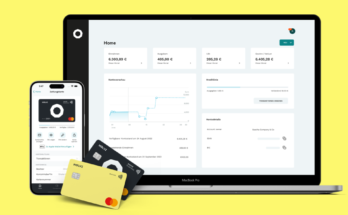introduction Call Forwarding
i well show about you Call Forwarding In an era defined by constant connectivity, communication plays a pivotal role in both personal and professional spheres. apps have emerged as a valuable tool, transforming the way we manage incoming calls. These apps offer unparalleled flexibility and convenience, allowing users to stay connected regardless of their location. In this article, we explore the features, benefits, and the impact of call forwarding apps on modern communication.
The Basics of Apps:
are software applications designed to redirect incoming calls from one phone number to another. Unlike traditional app services provided by carriers, these apps often provide users with greater control and customization options. Users can define specific conditions under which calls are forwarded, such as when the phone is unreachable, busy, or during specific time periods Call Forwarding.
Key Features:
- Customizable Call Routing: Call forwarding apps empower users to customize call routing based on their preferences. For instance, calls can be forwarded to another number, voicemail, or even to multiple numbers in a predefined sequence.
- Time-Based Forwarding: Users can set up time-based rules, ensuring that calls are forwarded to different numbers depending on the time of day. This feature is particularly useful for individuals managing international business calls across different time zones.
- Conditional Forwarding: the apps allow users to set conditions for. For instance, calls can be forwarded only when the user is unreachable or when the phone is in use, providing a high level of flexibility.
- Voicemail Integration: Many apps include voicemail integration, enabling users to receive and manage voicemails seamlessly. This ensures that no important messages are missed, even when a call cannot be answered immediately.
Benefits of Call Forwarding Apps:
- Enhanced Accessibility: the apps enhance accessibility by enabling users to receive calls on the go.
- Professionalism and Credibility: For businesses, the apps contribute to a professional image.
- Cost-Efficiency: Utilizing call forwarding apps can be more cost-effective than relying solely on traditional call forwarding services from telecom providers. Many apps offer competitive pricing and flexibility, allowing users to pay for the features they need.
- Personalization: Users have the ability to personalize call forwarding settings according to their unique needs. This level of customization ensures that the app adapts to the user’s lifestyle or business requirements.
Impact on Communication:
The widespread adoption of the apps has significantly impacted the way individuals and businesses communicate. Here are a few ways these apps have influenced communication:
- Global Connectivity: Call forwarding apps facilitate global connectivity, allowing businesses and individuals to transcend geographical boundaries.
- Remote Work Enablement: With the rise of remote work,who apps have become essential tools for professionals working from different locations. Remote workers can manage calls as if they were in a traditional office setting, ensuring uninterrupted communication.
- Customer Service Improvement: Businesses can enhance customer service by using call forwarding apps to route calls to the most appropriate team members.
The Future of Call Forwarding Apps:
As technology advances, the future of call forwarding apps holds exciting possibilities. Developers are constantly innovating to bring new features and capabilities to users.
Artificial Intelligence Integration: The integration of artificial intelligence (AI) into call forwarding apps could bring about intelligent call routing. AI algorithms could analyze past call patterns, prioritize important contacts, and dynamically adjust forwarding settings based on the user’s behavior.
- Multi-Channel Integration: Future apps might extend beyond traditional voice calls to include integration with other communication channels, such as messaging apps and video calls. This comprehensive approach would offer users a unified platform for managing all forms of communication.
- Smart Location-Based Forwarding: Enhanced location-based services could enable call forwarding apps to intelligently adapt to a user’s physical location.
- Enhanced Security Features: As privacy and security become increasingly important, future call forwarding apps may incorporate advanced encryption and authentication mechanisms. This would ensure that forwarded calls are secure, protecting sensitive information from potential interception.
- Collaboration Tools Integration: might integrate with collaboration tools and project management platforms. This integration would enable users to not only manage calls but also seamlessly collaborate with team members, enhancing overall productivity.
Case Studies: Real-World Impact of Call Forwarding Apps:
Let’s take a look at a couple of real-world scenarios where apps have made a significant impact:
- Global Business Expansion: A multinational company with offices in different time zones utilizes a call forwarding app to manage incoming calls efficiently.
- Entrepreneurial Flexibility: A solo entrepreneur uses a call forwarding app to maintain a professional image while working from various locations. By forwarding business calls to a virtual office number, the entrepreneur can answer client inquiries promptly, even when on the move, contributing to the growth and success of the business.
User-Centric Design and Ease of Use:
One of the key factors contributing to the widespread adoption of call forwarding apps is their user-centric design and ease of use. Developers understand the importance of creating interfaces that are intuitive and accessible to a diverse user base. Most call forwarding apps offer user-friendly dashboards where individuals can easily configure settings, view call logs, and manage their communication preferences. This emphasis on simplicity and accessibility ensures that users can harness the full potential of these apps without the need for extensive technical expertise.
As call forwarding apps continue to evolve, user feedback and data analytics play a crucial role in shaping their development. Continuous improvement based on user experiences ensures that these applications remain relevant and effective in meeting the ever-changing demands of the communication landscape.
Integration with Unified Communications:
The future of communication lies in unified and integrated platforms, where various tools seamlessly work together to provide a cohesive experience. the apps are increasingly becoming a vital component of unified communications strategies. Integration with other communication tools, such as video conferencing, instant messaging, and collaboration platforms, allows users to manage all aspects of their communication within a single ecosystem.
This integration not only streamlines workflows but also enhances collaboration among teams. For example, a app that integrates with a team collaboration tool can automatically update team members about the status of incoming calls, ensuring transparency and facilitating quicker response times Call Forwarding.
Conclusion: Embracing Seamless Connectivity:
In conclusion, call forwarding apps have become indispensable tools in the ever-evolving landscape of communication. Their impact on accessibility, professionalism, and cost-efficiency is evident across personal and professional spheres. As we look ahead, the ongoing development of these apps promises even greater innovation, providing users with enhanced features and capabilities. Embracing these advancements will undoubtedly contribute to a future where seamless connectivity is not just a convenience but a fundamental aspect of our interconnected lives.




